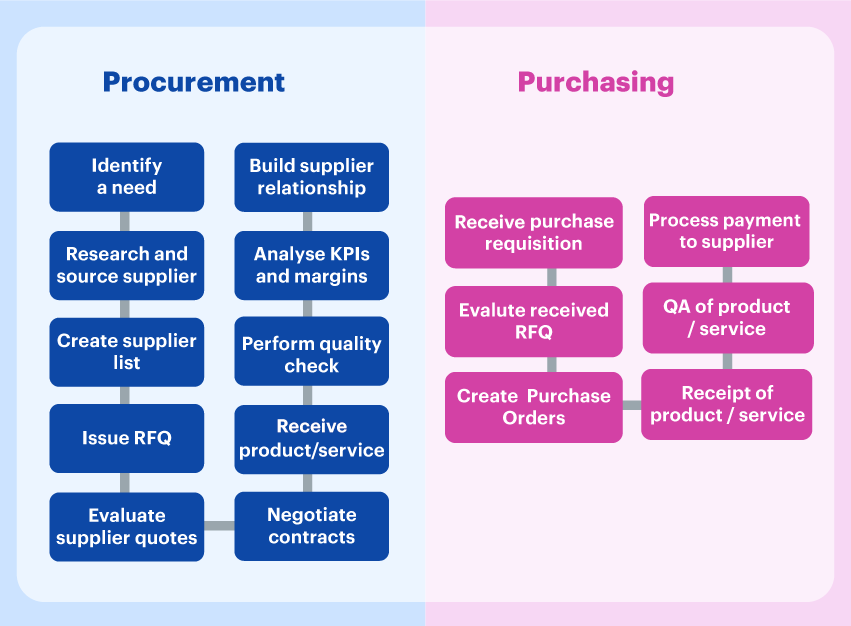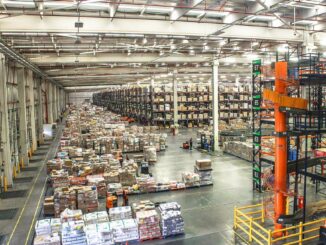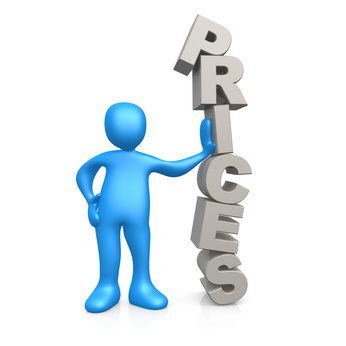Purchasing and procurement are two of the most common terms we often hear in supply chain management. The two terms seem interchangeable and are synonymous, but procurement does sound somewhat loftier and more sophisticated. What exactly is procurement? And what’s purchasing? In this post, we’re looking into the generally held definitions of purchasing and procurement, and the differences between purchasing and procurement.
What is Purchasing?
According to Wikipedia, purchasing is the process a business or organization uses to acquire goods or services to accomplish its goals. Purchasing is part of the wider procurement process, which typically also includes expediting, supplier quality, transportation, and logistics.
Purchasing is a task that all of us do in our daily lives, day in and day out. We don’t even think about it. But for most businesses, this is much more complicated. Purchasing makes up a huge part of companies’ costs. For example, manufacturing companies spend up to 70% on purchasing. There are indirect materials that are needed to make the whole manufacturing system run. In addition, you need capital to purchase or rent the land, build the factory, and buy machinery.
Five Tactical Phases of Purchasing
To have a streamlined process five different phases of purchasing must be observed.
Purchase Order
This lets the supplier know that we want the items from them. And they will initiate the sale on their part.
Advance Shipping Notice
We want to receive an advance shipping notice when the goods are expected to arrive.
Confirmation of Receiving
In the third step, we are confirming whether we receive the goods or not.
Process the Invoice
In the fourth step, we’re processing the invoice.
Arrange Payment
In the fifth step, we’re paying the supplier and we’re closing the purchasing loop.
To sum up, purchasing is the practice to buy the right material, at the right quantity, at the right quality, from the right source, at the right price.

What is Procurement?
According to Wikipedia, procurement is the process of finding and agreeing to terms, and acquiring goods, services, or works from an external source, often via a tendering or competitive bidding process.
A well-developed and effective procurement strategy involves many things and can do wonders for the business. For instance, negotiating favourable pricing and delivery terms can save a company loads of money, proper supply chain management system ensures ultimate efficiency, timeliness, and product quality.
Often, there’re limited resources given to the procurement department to acquire goods and services, which means they have to come up with a strategic sourcing solution to ensure they procure the best goods and services.
A procurement department’s value add is that it centralizes all activities that revolve around suppliers. And it manages those relationships with suppliers proactively.
The procurement department has to deal with things like:
- Sourcing activities and strategic sourcing
- Negotiation and supplier management
- Strategically selecting goods and services
- Approving organizational purchase requests
- Receiving goods and services
Basic Procurement
Basic procurement is more about the management of day-to-day tasks, for instance, your procurement team identifies suppliers, sends requests for quotations, negotiates prices and terms, places purchasing orders, arranges logistics and payments, etc.
Advanced Procurement
Apart from tasks specified in Basic Procurement, your organization has more value-added programs, for instance, forecasting the order quantity, measuring cash cycle, managing supplier relationships, benchmarking, improving the processes, etc.
Strategic Procurement
A strategic procurement approach involves everything stated above and much more. It has a wealth of intelligence regarding the supply chain market research in China, what’s going on in the current marketplace, and the bargaining power of suppliers, and uses powerful tools such as PESTLE and Porter’s Five Forces analysis to map the supply chain. Strategic procurement is deploying advanced tools and big data to meet end customer and stakeholder needs and requirements.
A truly intelligent procurement professional understands the psyche of the salesperson, what makes them tick, and how they need to be managed. As such the Procurement professional is able to put themselves in the shoes of salesperson and leverage that power to get the most favourable price and terms for the business. A strategic procurement approach is able to shape the strategic direction of the company.
In short, strategic procurement is focused on providing a higher level of value. Procurement must be great at communicating and marketing the value that the organization brings beyond the traditional transactional view of Procurement.



Leave a Reply